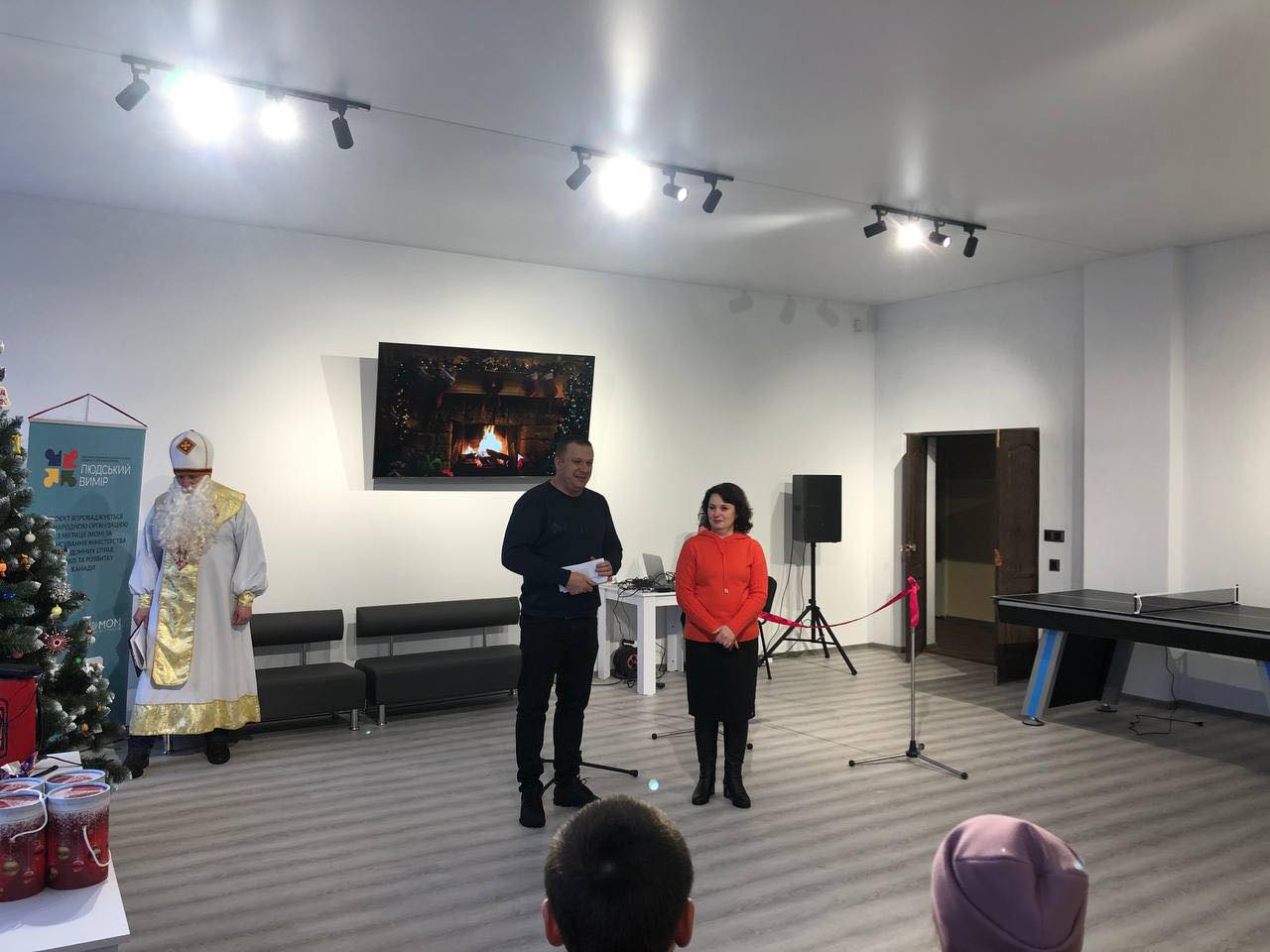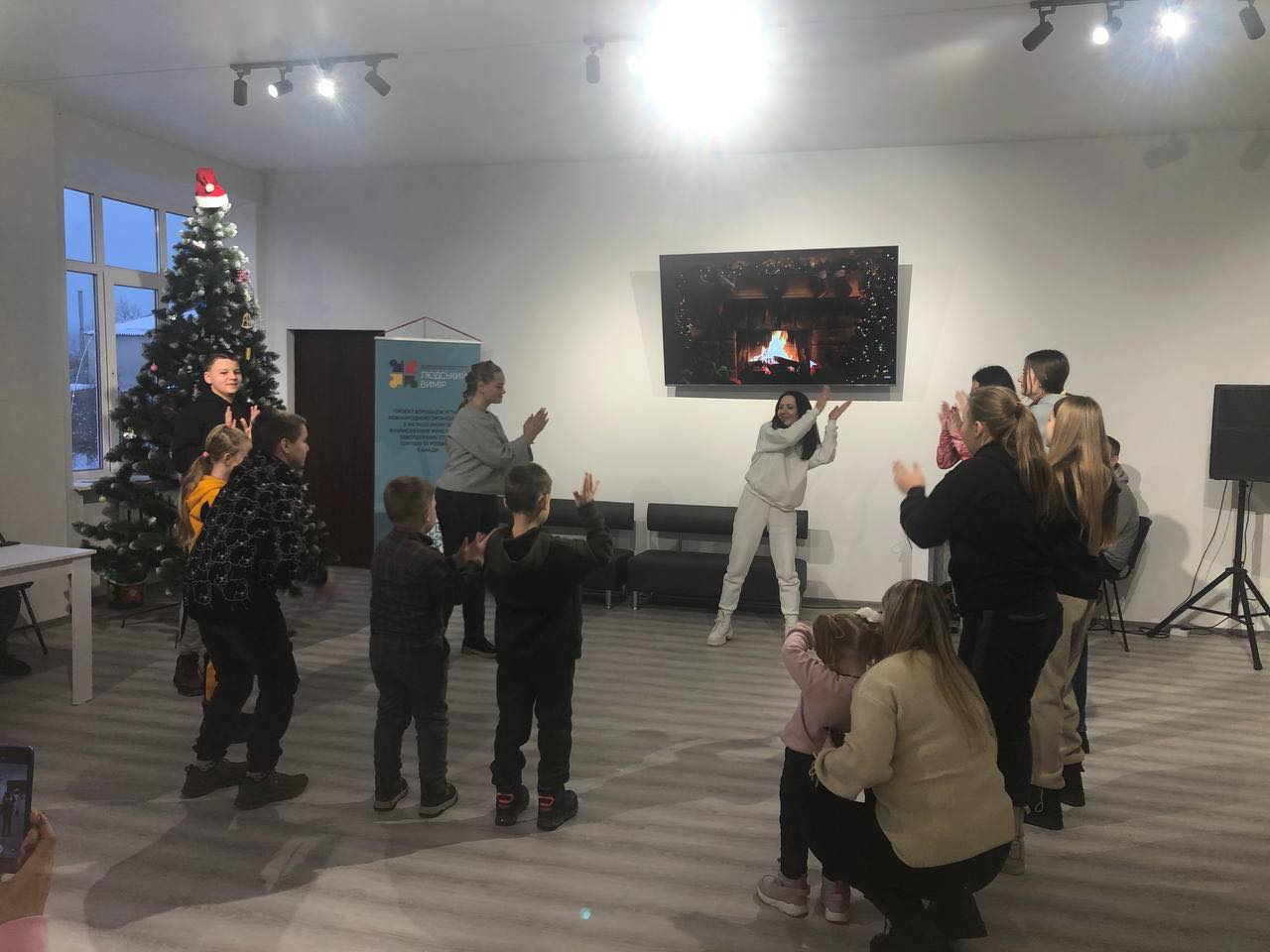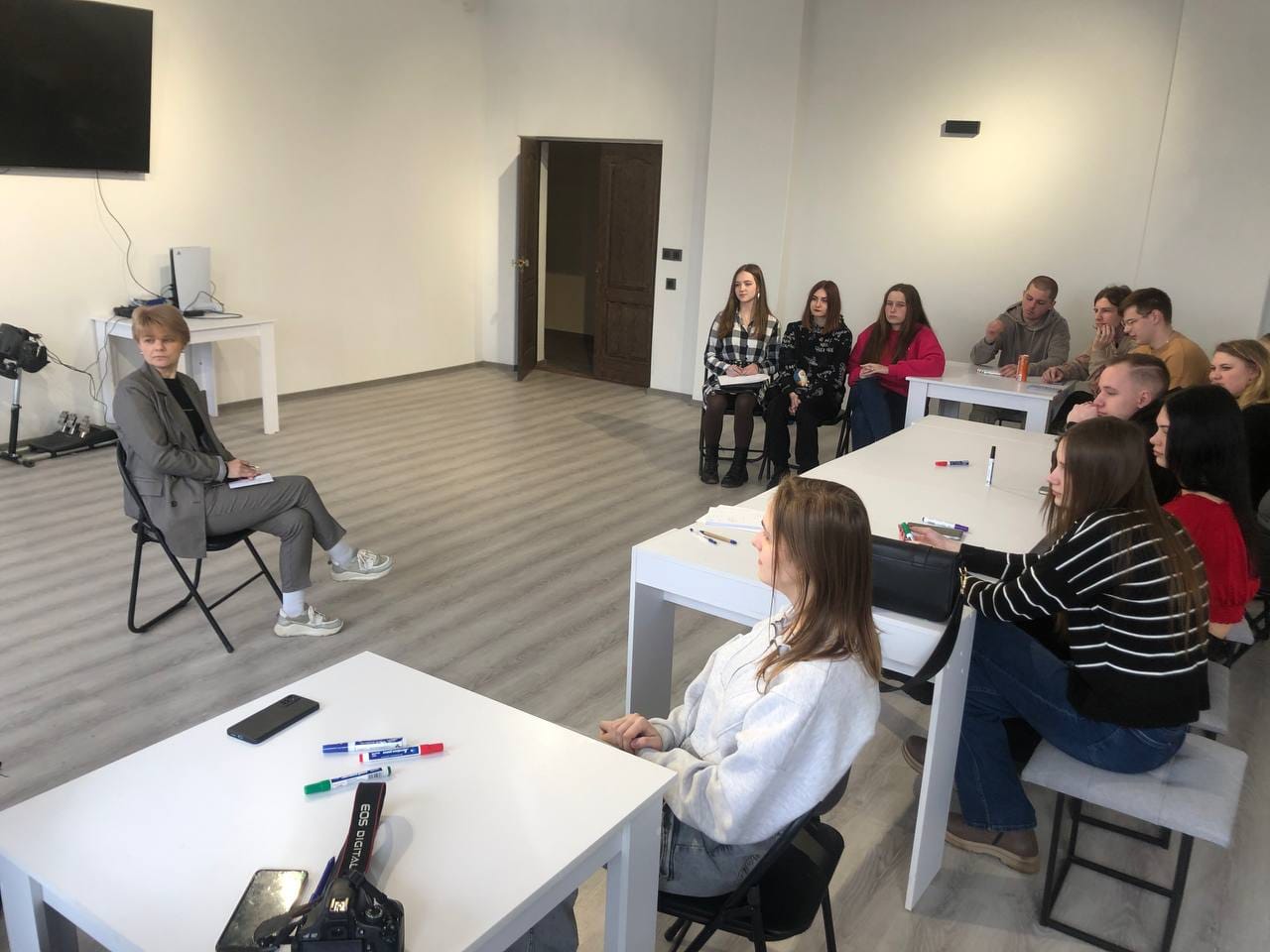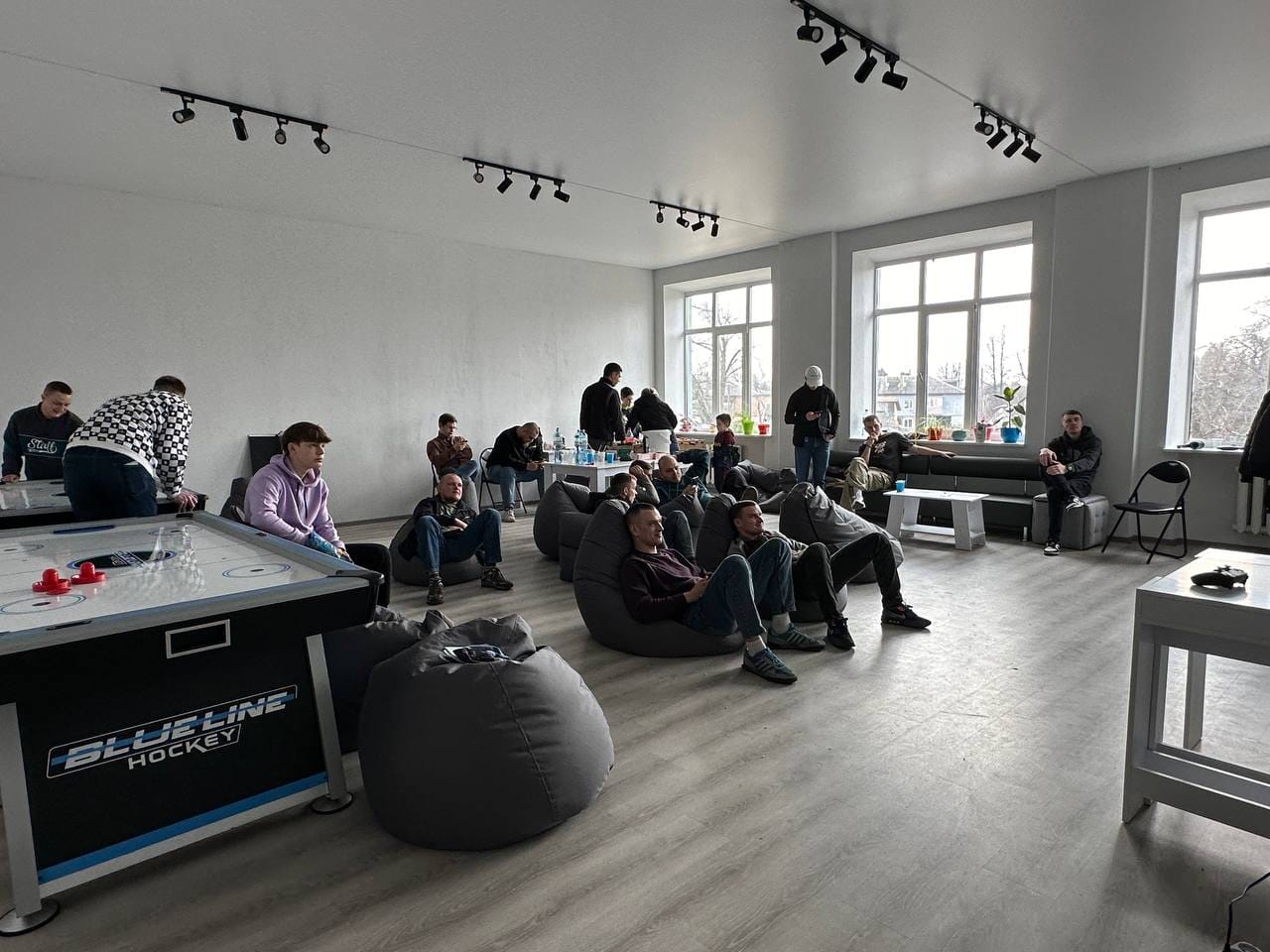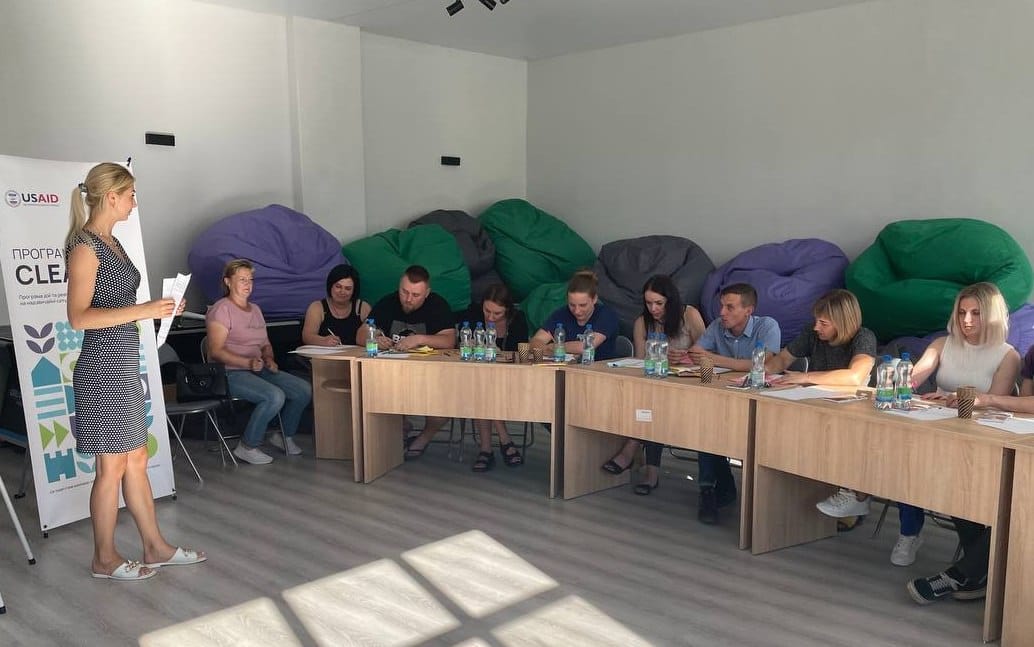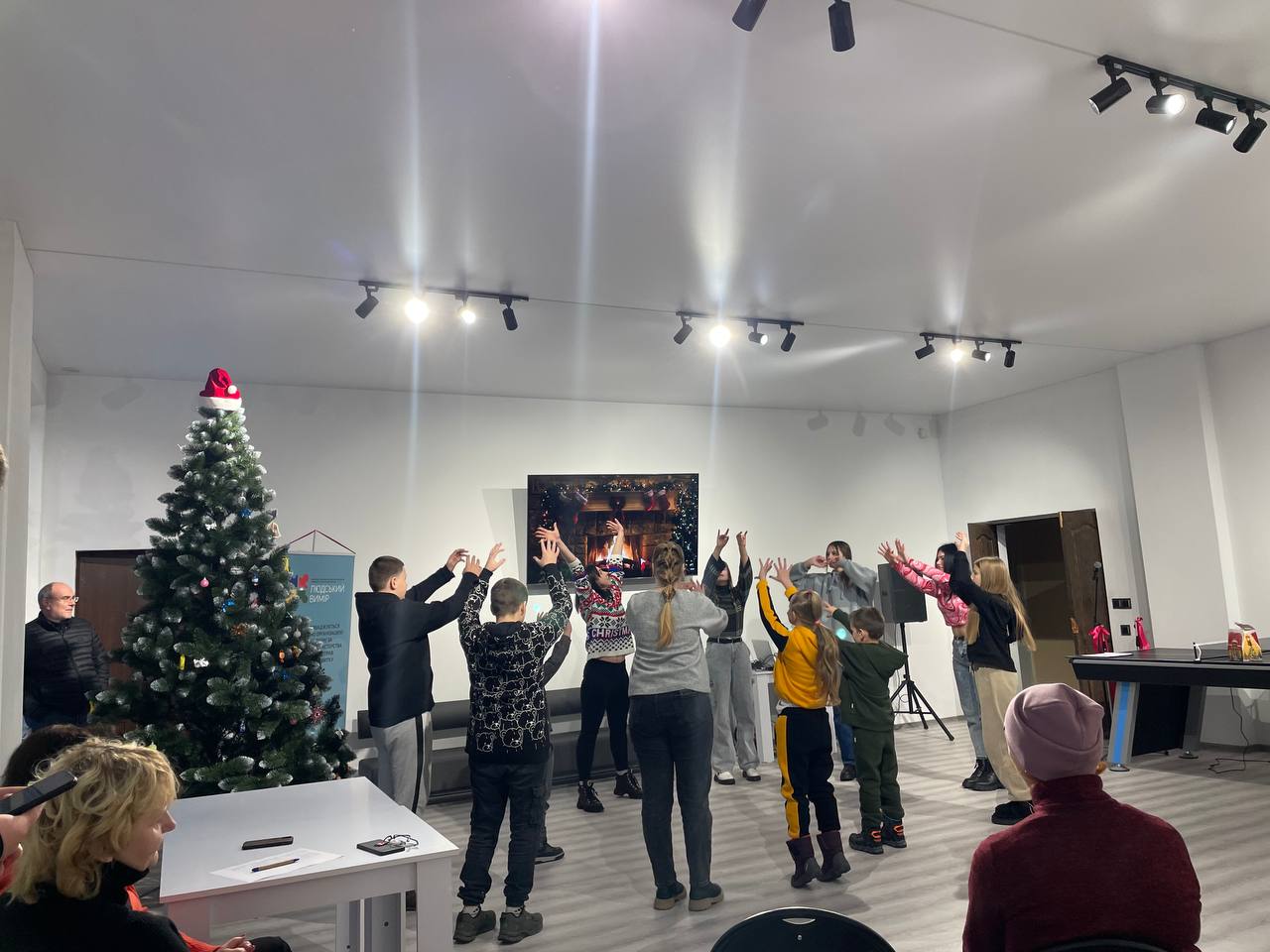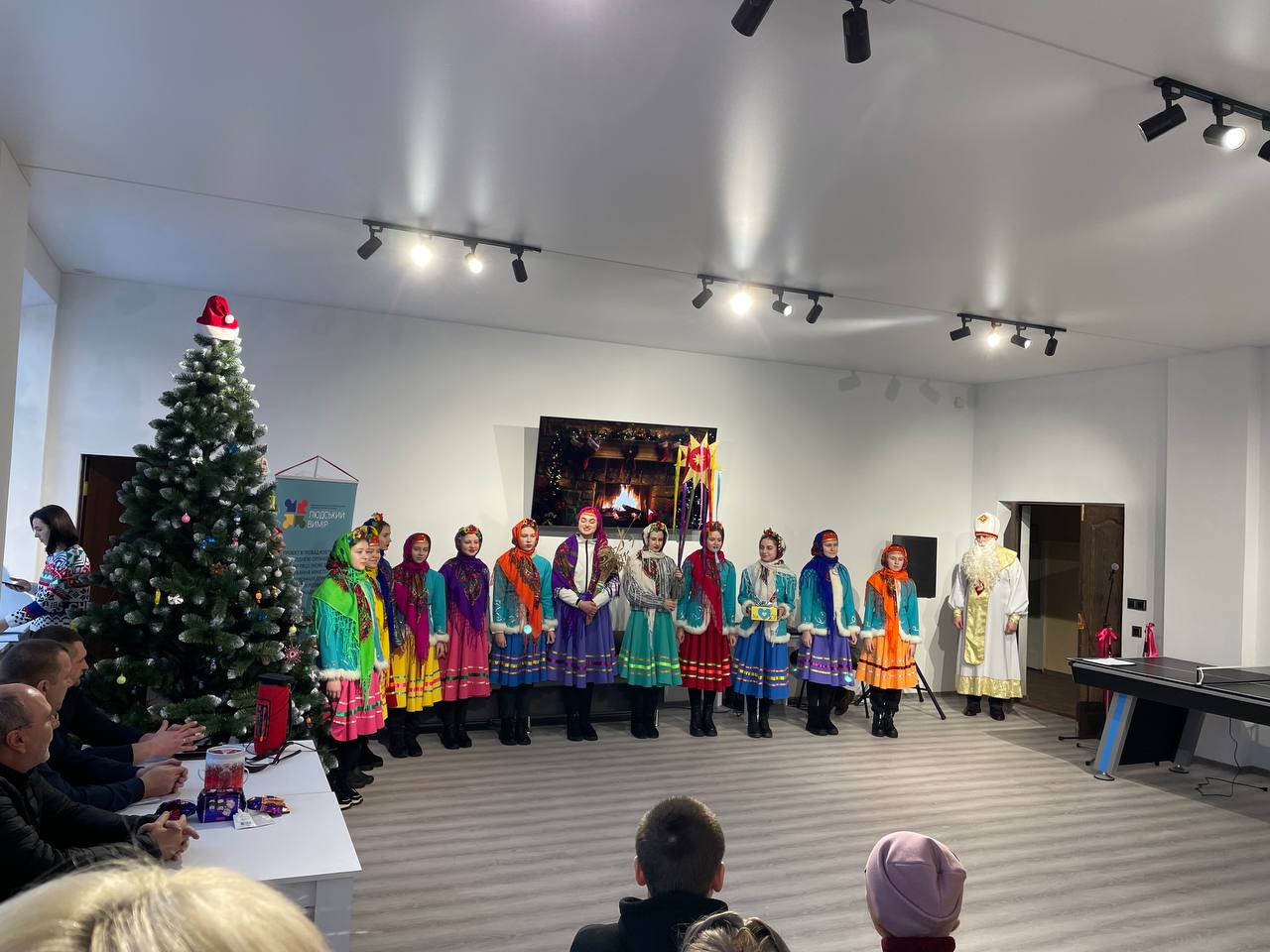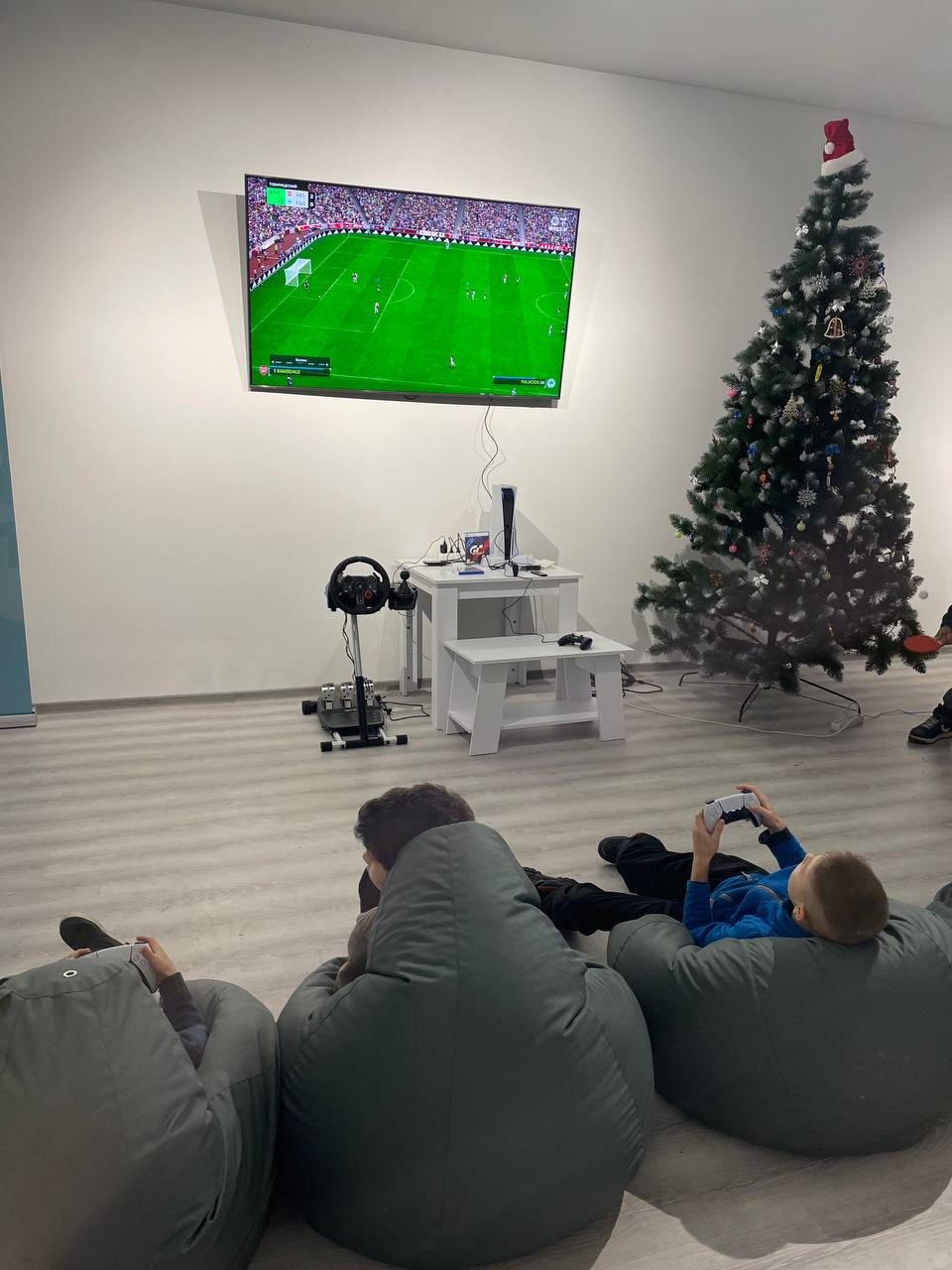Prioritising the places and people that need it the most
Youth space “ProYouth”
reation of a youth space in the Novhorod-Siverska city territorial community
The project resulted in the arrangement of a youth space that became a place for communication, interaction, implementation of ideas and initiatives of young people. It is adapted to the needs of different categories of young people, including local residents, internally displaced persons, young professionals, pupils and students. The project opened up new opportunities for creating youth programs, attracting investors and developing the local creative potential of the community
Ukraine
Local
All settlements of the community
It addresses urban-rural linkages
It refers to a physical transformation of the built environment (hard investment)
Yes
2023-12-25
No
No
No
As a representative of an organisation
The project aims to create an inclusive youth space in the Novhorod-Siverska community, which is located in the border region and is subject to constant shelling. The space should become a safe place for young people, including internally displaced persons (IDPs), where they can socialize, learn, and develop their skills. The project's target groups include community youth, including IDPs, NGOs, educational and cultural initiatives of the community. The project objectives were: renovation of a 100 m² space provided by the city council; purchase and installation of the necessary equipment (multimedia devices, game consoles, furniture); organization and holding of regular events: cultural events, workshops, film screenings, sports tournaments; integration of IDP youth into community life through educational and social activities; introduction of a mechanism for the sustainable functioning of the space (funding, administrative support). As a result of the project implementation, the following results were achieved: the first Youth Space in the community was created; the premises were renovated and equipment for active leisure and training was purchased; a number of activities were held to promote youth socialization; the position of a youth worker was introduced in the community structure for further development; a program for the sustainable functioning of the youth space at the local level was approved.
The project improves the quality of life of young people in the border crisis region, promotes the social integration of IDPs and creates conditions for self-development of young people. It serves as a model for similar initiatives in communities that need to create safe and friendly spaces for young people.
The project improves the quality of life of young people in the border crisis region, promotes the social integration of IDPs and creates conditions for self-development of young people. It serves as a model for similar initiatives in communities that need to create safe and friendly spaces for young people.
youth
inclusion
social interaction
cultural development
safe space
The project “Youth Space in Novhorod-Siverska Community” is in line with the principles of sustainable development, ensuring social, economic, and environmental impact.The social sustainability of the project is reflected in the creation of an inclusive space - the youth space promotes socialization of young people, supports their cultural and creative development, helps them find like-minded people and engages them in active social life; support for education and self-development - workshops, trainings, discussions are held to develop skills and raise the cultural level of young people; reduction of negative phenomena - creating a safe space helps reduce the risks of negative behavior among young people by offering alternative opportunities.Economic sustainability is reflected through the involvement of local resources - partnerships with local organizations, businesses, and the public contribute to the efficient use of community resources; support for the local economy - the project stimulates economic activity by creating demand for services and products of local businesses (stationery, art materials, equipment). Environmental sustainability is reflected through environmental education - events dedicated to environmental education and sustainable lifestyles are held.
The exemplary nature of the project in the context of sustainable development is that the project takes into account the needs of different social groups, including young people with special needs; the space can be expanded and adapted to new community needs; the project model can be easily adapted for implementation in other settlements; cooperation between NGOs, local authorities, businesses, and young people makes the project sustainable and effective.
The project is an example of sustainable community development, as it promotes social cohesion, economic growth, and environmental responsibility. It demonstrates how investing in youth can become the foundation for long-term community developmen
The exemplary nature of the project in the context of sustainable development is that the project takes into account the needs of different social groups, including young people with special needs; the space can be expanded and adapted to new community needs; the project model can be easily adapted for implementation in other settlements; cooperation between NGOs, local authorities, businesses, and young people makes the project sustainable and effective.
The project is an example of sustainable community development, as it promotes social cohesion, economic growth, and environmental responsibility. It demonstrates how investing in youth can become the foundation for long-term community developmen
The Youth Space in Novhorod-Siverska Community combines modern design, cultural traditions and comfort to create a unique place for communication, creativity and youth development. The aesthetics of the space is reflected through modern and functional design - the space is designed with the principles of comfort, minimalism and ergonomics in mind, which contributes to a pleasant atmosphere and convenience; bright accents and youthful style - the use of pleasant colors, modern furniture and decor creates a positive atmosphere for relaxation and inspiration. The space is comfortable for various activities, as there are areas for creativity, study, informal communication, recreation and entertainment; the space is adapted for people with different needs, including young people with disabilities; the modular design allows for easy configuration of the space for various events: workshops, film screenings, performances, exhibitions, etc. The cultural component and local identity is reflected through the support of creative initiatives - the organization of exhibitions, art events, literary evenings, which promotes the development of culture and self-expression of young people; community formation - an environment has been created that encourages young people to actively participate in the cultural life of the community. The exemplary nature of the project in terms of design and cultural component is flexibility and multifunctionality - the youth space is easily adaptable to the needs of the community, which increases its value and durability; inspiring environment - attractive design and comfort promote creativity, self-expression, and self-development of young people.
The Youth Space project is a model of combining aesthetics, functionality, and cultural richness. It demonstrates that environmental design directly affects the quality of human interaction, inspiration and development of the younger generation.
The Youth Space project is a model of combining aesthetics, functionality, and cultural richness. It demonstrates that environmental design directly affects the quality of human interaction, inspiration and development of the younger generation.
The Youth Space in Novhorod-Siverska Community is designed to be accessible, inclusive, and beneficial for all residents, promoting social equality and empowerment regardless of physical, social, or economic circumstances.
1. Physical Accessibility & “Design for All” – The space allows free movement and participation for everyone.
2. Affordability & Economic Inclusion – Entry is free, with workshops, lectures, and cultural events available at no cost. Special attention is given to low-income youth, internally displaced persons, and people with disabilities.
3. Inclusive Governance & Social Models – The space operates on self-governance, empowering youth to influence its development. Experts, activists, and volunteers contribute to fostering an inclusive environment, and all community members can propose improvements.
4. Social Inclusion & Equal Opportunities – Regardless of age, gender, ethnicity, or status, everyone can participate in activities that promote integration, friendship, and trust.
The project's exemplary nature lies in its physical accessibility (designed for all), social equality (equal opportunities for youth), economic inclusion (free access), co-management (community participation in development), and new social models (a space for dialogue, tolerance, and inclusive initiatives).
1. Physical Accessibility & “Design for All” – The space allows free movement and participation for everyone.
2. Affordability & Economic Inclusion – Entry is free, with workshops, lectures, and cultural events available at no cost. Special attention is given to low-income youth, internally displaced persons, and people with disabilities.
3. Inclusive Governance & Social Models – The space operates on self-governance, empowering youth to influence its development. Experts, activists, and volunteers contribute to fostering an inclusive environment, and all community members can propose improvements.
4. Social Inclusion & Equal Opportunities – Regardless of age, gender, ethnicity, or status, everyone can participate in activities that promote integration, friendship, and trust.
The project's exemplary nature lies in its physical accessibility (designed for all), social equality (equal opportunities for youth), economic inclusion (free access), co-management (community participation in development), and new social models (a space for dialogue, tolerance, and inclusive initiatives).
The “Youth Space in Novhorod-Siverska Community” used a participatory approach, ensuring active citizen and youth involvement at all stages—from identifying needs to implementation and evaluation.
At the needs assessment and planning stage, a Dialogue Session allowed young people to define priorities, followed by a community-wide survey, including youth and internally displaced persons. A second online survey helped determine zoning and equipment needs.
During implementation, the premises were renovated using local budget funds, while donor funds covered furniture and equipment, considering recommendations from the youth initiative group.
At the functioning and development stage, the space officially opened with a Christmas event for children of fallen defenders of Ukraine. A meeting with active youth launched the development of programs. The city council created a youth worker position to ensure the space's operations, and events are now regularly held.
Community involvement was crucial, leading to:
• Meeting real needs – The space was designed based on genuine community priorities.
• Increased youth responsibility – Participants feel ownership and accountability for its success.
• Stronger social cohesion – The project united people across ages and social groups.
The Youth Space is a model of effective community engagement, making it a sustainable hub for youth initiatives and social interaction. Through collaboration, it has become more than a recreation area—it is a center for development and inclusion.
At the needs assessment and planning stage, a Dialogue Session allowed young people to define priorities, followed by a community-wide survey, including youth and internally displaced persons. A second online survey helped determine zoning and equipment needs.
During implementation, the premises were renovated using local budget funds, while donor funds covered furniture and equipment, considering recommendations from the youth initiative group.
At the functioning and development stage, the space officially opened with a Christmas event for children of fallen defenders of Ukraine. A meeting with active youth launched the development of programs. The city council created a youth worker position to ensure the space's operations, and events are now regularly held.
Community involvement was crucial, leading to:
• Meeting real needs – The space was designed based on genuine community priorities.
• Increased youth responsibility – Participants feel ownership and accountability for its success.
• Stronger social cohesion – The project united people across ages and social groups.
The Youth Space is a model of effective community engagement, making it a sustainable hub for youth initiatives and social interaction. Through collaboration, it has become more than a recreation area—it is a center for development and inclusion.
The Youth Space in Novhorod-Siverska Community project was implemented with the participation of local, regional, national, and international partners, each of whom made an important contribution to its success. At the local level, the city council provided the premises (100 m²) and approved funding for the maintenance of the space. An initiative youth group conducted a survey, participated in the planning and selection of equipment. NGOs and community members supported the project through discussions and active participation. Added value: ensuring compliance with community needs, involving young people in decision-making, and forming an active youth center. At the regional level, the regional council and the youth department facilitated resource mobilization. Regional youth organizations provided experience exchange. Added value: improved quality of management, scalability of the initiative. At the national level, donor and civil society organizations helped to evaluate the project's impact and organize events. Added value: adaptation to national youth policy, increased trust in the initiative. At the European level, the Government of Canada financially supported the implementation, and European partners provided expert support to the project. Added value: international cooperation, implementation of European standards.
The project is an example of effective cooperation at various levels, which allowed not only to create a youth space but also to lay the foundation for its sustainable development and scaling.
The project is an example of effective cooperation at various levels, which allowed not only to create a youth space but also to lay the foundation for its sustainable development and scaling.
The Youth Space in Novhorod-Siverska Community project combined several disciplines to create an effective, sustainable, and useful environment for young people. Sociology helped to identify the real needs of the community through surveys and dialog sessions, and the interaction of sociologists with urbanists and psychologists provided a comfortable and functional space. Urbanism and architecture contributed to the rational zoning of the premises, taking into account the needs of young people, and close cooperation with designers and psychologists ensured ergonomics and accessibility. Education and youth policy became the basis for creating a youth development platform, including through educational events, workshops, and the institutionalization of a youth worker. Psychology and social inclusion ensured a comfortable space with relaxation areas, mental health support and integration of IDP youth. Management and financing allowed for effective budget implementation, procurement, and evaluation of the efficiency of resource use. Information technology increased the level of digital literacy of young people through interactive panels, a VR zone and educational events, and facilitated feedback through online surveys. The interaction of experts in these fields has turned the project into not just a place for leisure, but a center for socialization and development that will have a lasting impact on the community.
The project “Youth Space in Novhorod-Siverska Community” is innovative due to new methods of interaction, digital technologies, sustainability, social impact, and flexible management. Unlike traditional youth centers, it was created in co-creation with young people through dialogue sessions and surveys, which allowed us to take into account the real needs of the community. The use of VR technologies, gamification, and a digital zone provides not only leisure, but also training and development of digital competencies. The space is officially enshrined in the community structure, which guarantees its long-term functioning, and funding is provided in the Youth of Sivershchyna program until 2025.” The project not only entertains, but also engages young people in social initiatives, volunteering, and supporting children of fallen defenders, which goes beyond the standard formats of youth centers. An important aspect is the flexible performance evaluation system: monitoring attendance, online surveys, and adapting activities to meet the needs of young people. This project not only creates a space for leisure, but also forms active citizens, can be scaled up and serve as a model for other communities in Ukraine.
Compared to traditional youth centers, this space has unique features that make it innovative:
- Flexible space design - adaptive zoning and mobile furniture make it easy to transform the space for different events.
- Digital integration - the use of VR technologies, interactive panels and online tools for learning and leisure.
- Co-management - young people are actively involved in decision-making on the functioning of the space, creating a new model of public self-government.
- Inclusivity - the space is accessible to all social groups, including IDPs, people with disabilities, and people from different cultures.
- A cultural and social hub - a space not only for leisure, but also for education, career development, and community initiatives.
Compared to traditional youth centers, this space has unique features that make it innovative:
- Flexible space design - adaptive zoning and mobile furniture make it easy to transform the space for different events.
- Digital integration - the use of VR technologies, interactive panels and online tools for learning and leisure.
- Co-management - young people are actively involved in decision-making on the functioning of the space, creating a new model of public self-government.
- Inclusivity - the space is accessible to all social groups, including IDPs, people with disabilities, and people from different cultures.
- A cultural and social hub - a space not only for leisure, but also for education, career development, and community initiatives.
The Youth Space in Novhorod-Siverska Community project was implemented using an inclusive, interdisciplinary and flexible approach based on co-creation, participatory planning, sustainable development and digital technologies. The Co-Creation method ensured the active involvement of young people through dialogue sessions and surveys, which allowed the space to be adapted to the real needs of the community. The youth initiative group participated in the planning, selection of equipment and organization of events, which increased youth civic engagement and the effectiveness of the space. Participatory planning involved the interaction of local authorities, NGOs, and an international partner, which contributed to the legitimacy of decisions and the financial sustainability of the project. To ensure the sustainable development of the space, its functioning was enshrined in a decision of the city council, a youth worker position was created, and funding was included in the local program “Youth of Sivershchyna” for 2022-2025. The flexible management (Agile approach) allows the space to adapt to changes through online surveys, activity monitoring, and updating the program of events according to the needs of young people. The use of digital technologies and gamification (VR zones, interactive panels, game consoles) helps to engage young people, develop digital skills and informal education. This approach has created not just a place for leisure, but a platform for youth development, social integration and activation that can be replicated in other communities.
The Youth Space in Novhorod-Siverska Community project has significant potential for scaling up and adaptation in other communities and among different groups of beneficiaries. The methodology of co-creation and participatory planning, which involves dialogue sessions, surveys, and joint decision-making, can be used to create youth spaces, social projects for IDPs, people with disabilities, and the elderly. The flexible model of the space allows for the adaptation of zoning, programming, and content to the needs of the community, and the use of interactive equipment (VR, game consoles, board games) is suitable for libraries, schools, universities, and integration centers. A sustainable funding model with space allocated in local youth development programs and a combination of grant and budget funds ensures the long-term functioning of such initiatives in communities. Digital technologies can be used for educational programs, digital skills development centers, and technology incubators, and a data collection mechanism through online surveys and social media helps to adapt activities to meet community needs. A flexible evaluation and monitoring system allows for efficient use of resources, changes in the program of activities, and involvement of beneficiaries in the management of the space. Thanks to these elements, the project can be easily adapted to different social contexts both in Ukraine and abroad, creating new opportunities for community development.
The project “Youth Space in Novhorod-Siverska Community” is a local initiative that responds to global challenges, including the lack of social integration of young people, the digital divide, mental health issues, urbanization, and low youth participation in decision-making. The lack of platforms for youth self-realization is being addressed by creating spaces for social interaction, bringing together local youth and IDPs. The digital divide is being bridged through a VR zone, interactive devices, digital literacy activities, and online learning opportunities. To support mental health, a safe environment, a relaxation area, psychological support and social integration measures for vulnerable groups are provided. To reduce the outflow of young people from small communities, the space offers educational, cultural, and career opportunities, motivating young people to stay in the community. At the same time, the project promotes youth involvement in decision-making through meetings with the authorities, youth forums, and volunteer initiatives. This is a universal model that can be adapted in other communities to ensure sustainable social development and solve global problems with local solutions.
The project “Youth Space in Novhorod-Siverska Community” has a significant social, educational and community impact. The first youth space in the community (100 m²) was created, equipped with modern equipment (VR zone, interactive panels, game consoles), which provides young people with a place for development, socialization and leisure. On December 25, 2023, it was officially opened, and among the first activities was support for children of fallen soldiers. The space was included in the local program “Youth of Sivershchyna” (2022-2025), and a youth worker was hired to ensure the project's sustainability. About 500 young people have gained access to a safe environment, educational activities, trainings, and opportunities to implement their own initiatives. The space is actively visited by IDPs, facilitating their integration. The project has a positive impact on the community by increasing social cohesion, involving young people in decision-making, and creating a platform for cooperation between NGOs. It promotes the development of digital skills, supports mental health, and fosters a culture of healthy living. In line with the UN Sustainable Development Goals, the project provides quality education, inclusiveness, career opportunities, and youth infrastructure development. Its model can be replicated in other communities, and the space will become a platform for new initiatives and international partnerships. It is not just a leisure center, but an effective tool for social integration and training a new generation of active citizens.

